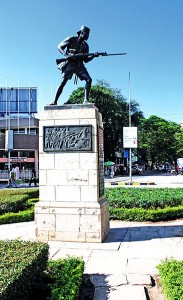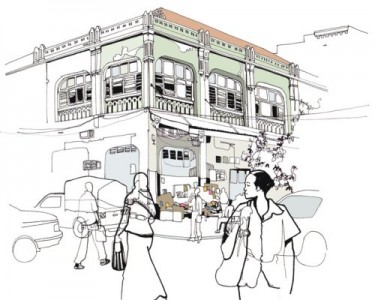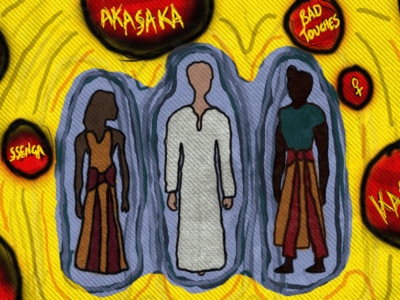Can a poor nation transform into a middle-class nation while maintaining its identity, history and architectural heritage? Apparently not. This is according to Tanzania's former Minister for Natural Resources and Tourism and current Minister for Water Jumanne Maghembe.
Maghembe made this observation following the Citizen newspaper's revelation of his revocation of the Antiquities Declaration of Conservation Areas Notice No. 2006 on February 20, 2007, paving the way for the demolition of historical buildings and monuments.
He is quoted by the Citizen as saying:
As you are aware, we are transforming from a poor country into a middle income nation, and this cannot be realised by keeping old buildings intact.
The newspaper went on to note that iconic landmarks such as Askari Monument, Old Post office and Karimjee Hall are no longer protected.

The Askari Monument in Dar Es Salaam, Tanzania. Photo released into the Public Domain by Wikipedia user Moongateclimber.
The Askari Monument is a memorial to the soldiers who fought in the British Carrier Corps in World War I., and Karimjee Hall is Tanzanian's former house of parliament.
Others are a building on the popular Samora Avenue that housed the office in Dar es Salaam, the largest city in Tanzania, of Angola’s first president Agostinho Neto during the independence struggle, Tanzania Publishing House, which was formerly a meeting point for southern African liberation leaders such as Agostinho Neto and Mozambique’s Samora Machel.
Historical structures that have already been demolished include MC George Building at the junction of Samora Avenue and Mkwepu Street in 2008.
MC George Building, built in 1901, originally housed a police officers’ mess during German colonial rule. It later served as the Tanzania head office of a German pharmaceutical company before housing the legendary Salamander Restaurant.
Reacting to the Citizen's article on Facebook page comment thread, Khatidja Dhala said she has lost faith in the government of Tanzania:
And the drama of TZ continues … I've lost faith in those who are in “charge”. This is awful. We are going to be living in a concrete / glass / ugly jungle with horrible buildings that will probably fall down cause they're built so quickly and cheap.
Patrick Wachira wondered how a PhD holder like Maghembe can make such an argument:
If that's the reasoning a person with a Phd is using, what hope do we have for the rest of parliament?. We should learn from China. Not all that's shiny and new is good for your country.

An artistic sketch by Sarah Markes of one of five buildings on Samora Avenue in Dar Es Salaam that was demolished on August 10, 2013. Illustration used with permission from Sarah Markes of http://darsketches.wordpress.com/
Over 30 people died in March 2013 after a new 16-story building collapsed in Dar es Salaam. Referring to that tragedy, Ahmed Salim wrote:
But its totally ok for a new building to collapse.
Sarah Markes, the author and artist behind Dar Sketches blog and book, wrote:
RIP light corner and the rest. very very sad indeed
Dar Sketches is a project initiated by artist and illustrator Sarah Markes. It is a celebration of the cultural and architectural heritage of Dar es Salaam as well as an effort to raise awareness of the threats to this heritage posed by rapid and unplanned urban development.
Aristotle Mang'ombo was left speechless:
Am jus[t] speechless and can't believe a minister would come and say what he jus[t] said in this paper. What a pity!
On Street Level Facebook page, referring to recently demolished Light Corner Building in the corner of Mkwepu and Samora Avenue, Sala Lewis wrote on August 18, 2013:
We just drove past this evening. So sad to see that building go.
Jason Rubens complained:
cos Dar [es Salaam] soooooo needs another crappy high-rise … ugh.
Lisa Purvis was sorry to hear about the demolition:
So sorry to hear this. What a beautiful building.
On Crime Alert for Dar Es Salaam Facebook page, users were also shocked and dismayed at the demolition exercise.
Kishan Gohen complained that all the government want is to make money from foreign investors:
No history no tourist no income, all they want is to make money by allowing foreign investor to invest n they receive hefty grant n not forgetting Hela ya chai [money for tea].
Gallus B Masama noted:
Shame… In no time Dar es Salaam will have no story to tell future generations!
However, Pat Pablo disagreed, arguing that history will be taken down in books, so no need to preserve the actual structures:
As time goes, we need to move our steps ahead, no need of old buildings to show in the future, history will be written on books
Mamdali Siwji echoed similar sentiment:
Old buildings have no place now as new developments needed now
The historical buildings are not part of Tanzanian's culture, said Andy Dale:
You don't understand, these buildings were erected by the hated colonial oppressor and have hostile names like McGeorge therefore they are not a part of Tanzania's history and so they must be destroyed for the good of post colonial poetry!
Finally, Ed Gabriél asked:
why does it have to be in the CBD [Commercial Business District]? developed countries always develop the undeveloped areas, they should build these skycrapers out of city center to make other CBDz






